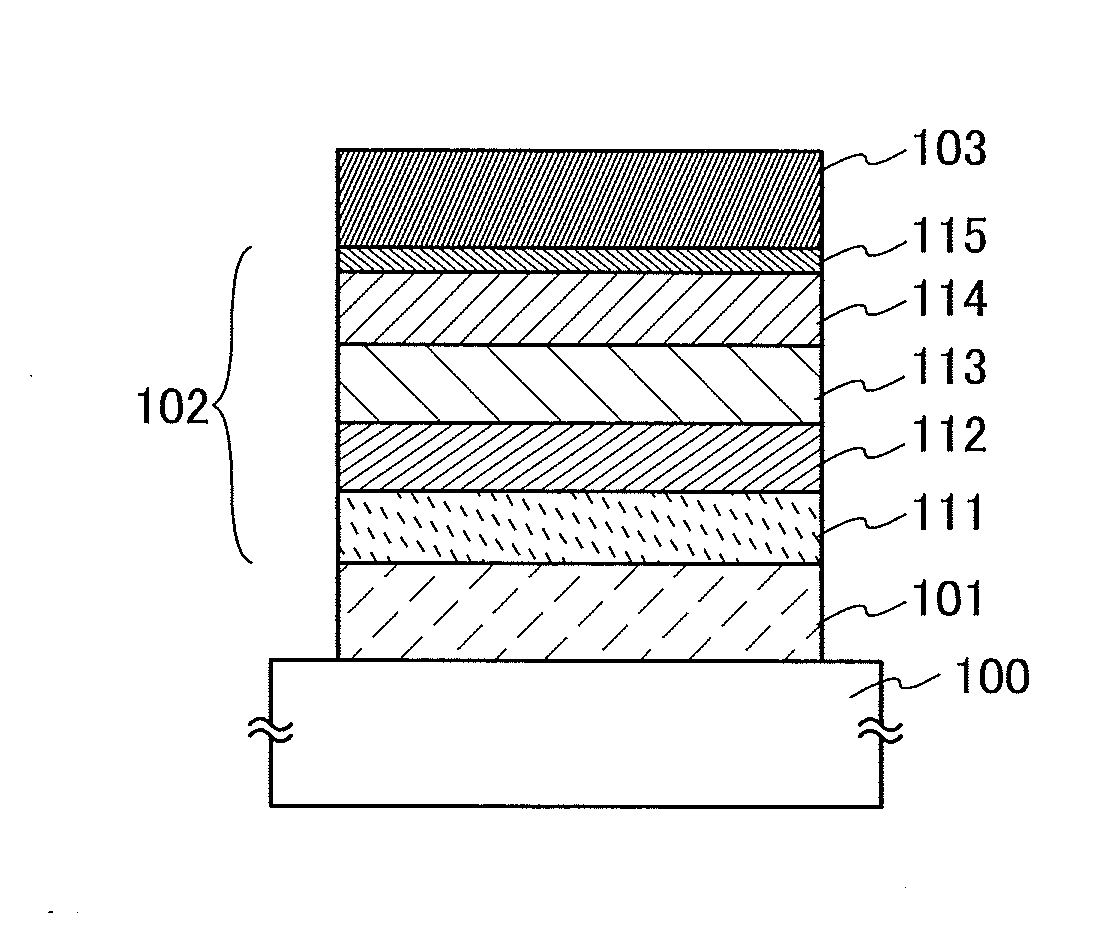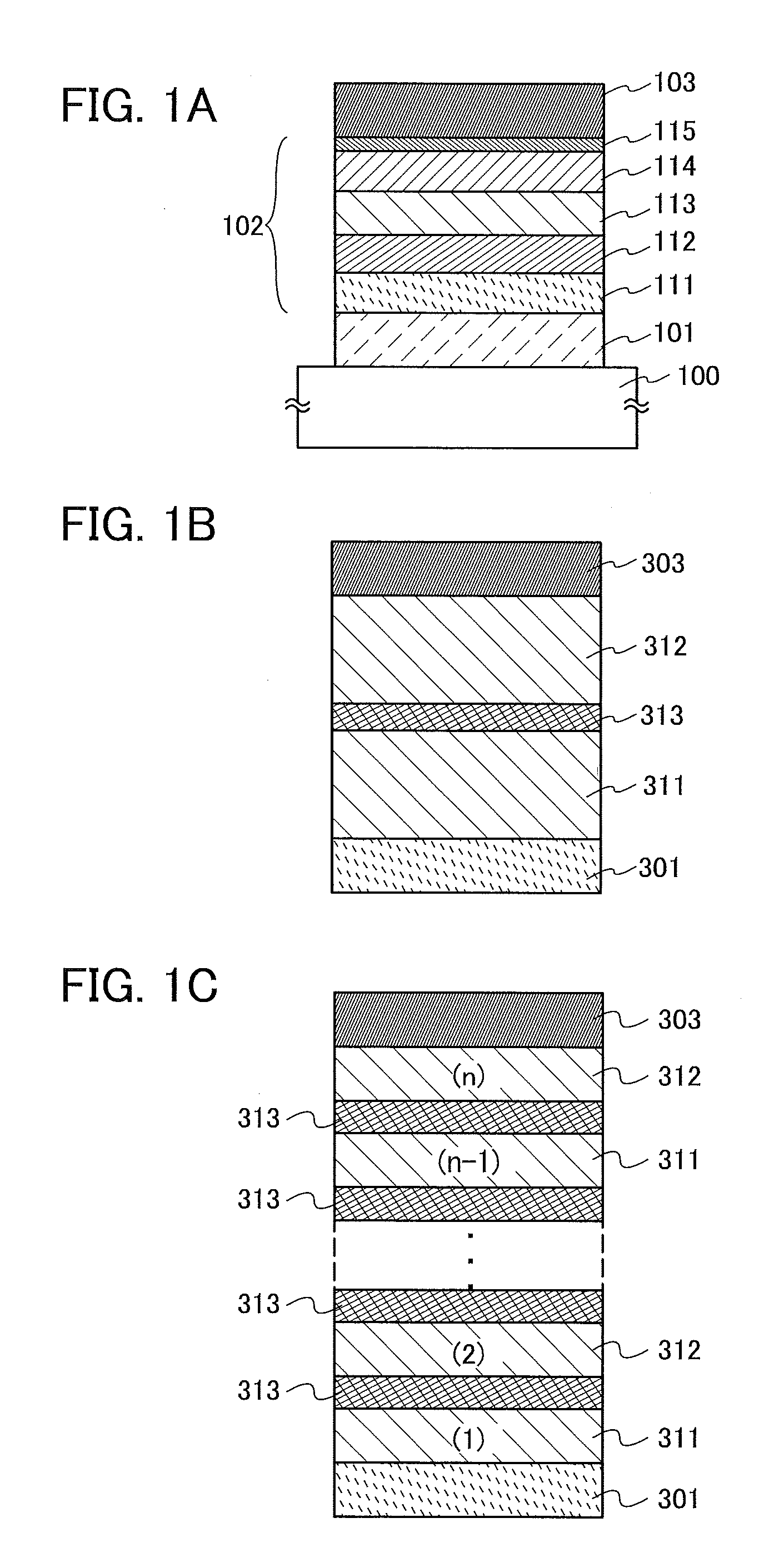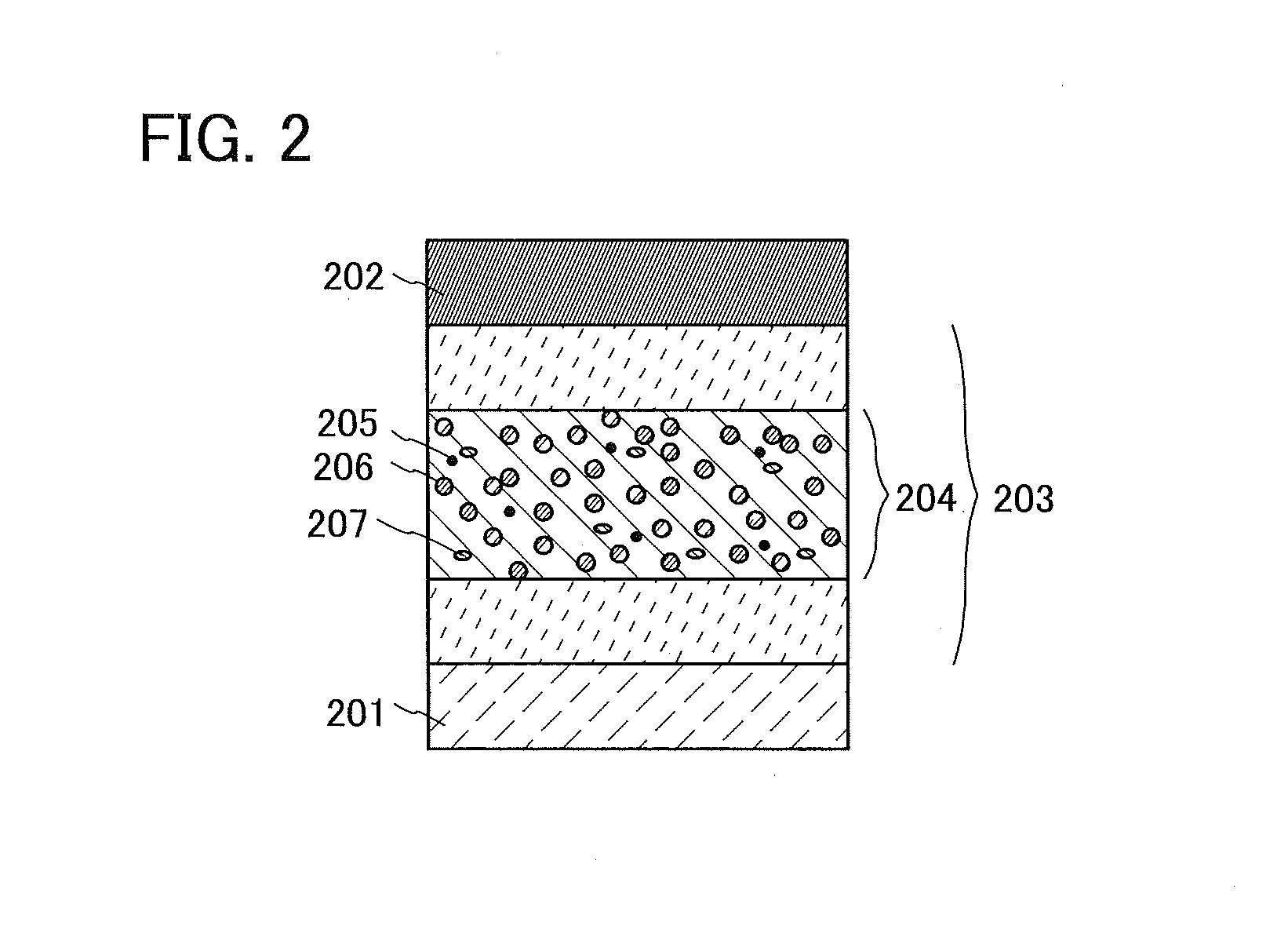Organic Compound, Light-Emitting Element, Light-Emitting Device, Electronic Device, and Lighting Device
a technology of light-emitting devices and organic compounds, which is applied in the direction of solid-state devices, thermoelectric devices, organic chemistry, etc., can solve problems such as difficult to obtain, and achieve the effects of low voltage, long life and high current efficiency
- Summary
- Abstract
- Description
- Claims
- Application Information
AI Technical Summary
Benefits of technology
Problems solved by technology
Method used
Image
Examples
embodiment 1
[0090]In this embodiment, an organic compound of one embodiment of the present invention will be described.
[0091]One embodiment of the present invention is an organic compound represented by General Formula (G1).
[0092]In General Formula (G1), A represents a substituted or unsubstituted dibenzofuran-diyl group, a substituted or unsubstituted dibenzothiophene-diyl group, a substituted or unsubstituted N-aryl-9H-carbazole-diyl group, or a substituted or unsubstituted N-alkyl-9H-carbazole-diyl group; Ar1 and Ar2 each independently represent a single-bond or a substituted or unsubstituted arylene group; R11 to R19 and R21 to R29 each independently represent hydrogen, an alkyl group having 1 to 6 carbon atoms, a cycloalkyl group having 3 to 6 carbon atoms, or a substituted or unsubstituted aryl group having 6 to 13 carbon atoms; X1 and X2 each independently represent a carbon atom or a nitrogen atom; and the carbon atom is bonded to hydrogen, an alkyl group having 1 to 6 carbon atoms, a c...
embodiment 2
[0110]In this embodiment, a light-emitting element in which an organic compound of one embodiment of the present invention is used for a light-emitting layer will be described with reference to FIGS. 1A to 1C.
[0111]In the light-emitting element of this embodiment, the EL layer having at least a light-emitting layer is interposed between a pair of electrodes. The EL layer may also have a plurality of layers in addition to the light-emitting layer. The plurality of layers has a structure in which a layer containing a substance having a high carrier-injection property and a layer containing a substance having a high carrier-transport property are combined and stacked so that a light-emitting region is formed in a region away from the electrodes, that is, so that carriers recombine in a region away from the electrodes. In this specification, the layer containing a substance having a high carrier-injection or a high carrier-transport property is also called functional layer which functio...
embodiment 3
[0156]In this embodiment, a light-emitting element in which the organic compound of one embodiment of the present invention is used for a light-emitting layer will be described with reference to FIG. 2. The light-emitting element of this embodiment includes an EL layer between a pair of electrodes, and a light-emitting layer in the EL layer contains an organic compound of one embodiment of the present invention and two or more kinds of organic compounds.
[0157]A light-emitting element described in this embodiment includes an EL layer 203 between a pair of electrodes (a first electrode 201 and a second electrode 202) as illustrated in FIG. 2. The EL layer 203 includes at least a light-emitting layer 204 and may include a hole-injection layer, a hole-transport layer, an electron-transport layer, an electron-injection layer, a charge generating layer, and the like as appropriate between the first electrode 201 and the light-emitting layer 204 and between the second electrode 202 and the...
PUM
 Login to View More
Login to View More Abstract
Description
Claims
Application Information
 Login to View More
Login to View More - R&D
- Intellectual Property
- Life Sciences
- Materials
- Tech Scout
- Unparalleled Data Quality
- Higher Quality Content
- 60% Fewer Hallucinations
Browse by: Latest US Patents, China's latest patents, Technical Efficacy Thesaurus, Application Domain, Technology Topic, Popular Technical Reports.
© 2025 PatSnap. All rights reserved.Legal|Privacy policy|Modern Slavery Act Transparency Statement|Sitemap|About US| Contact US: help@patsnap.com



